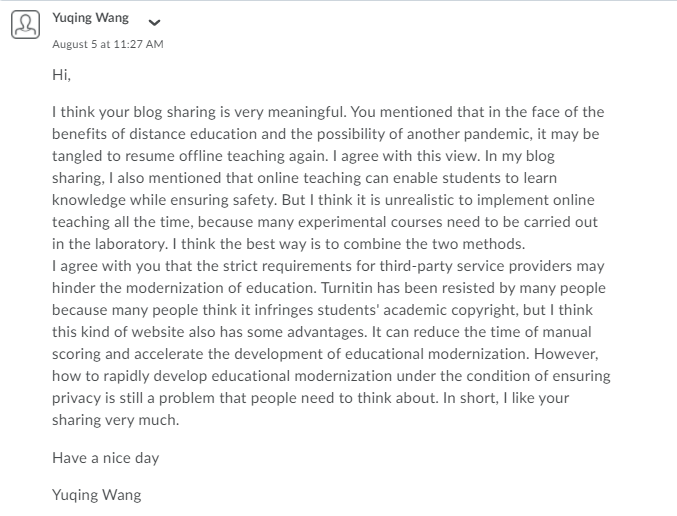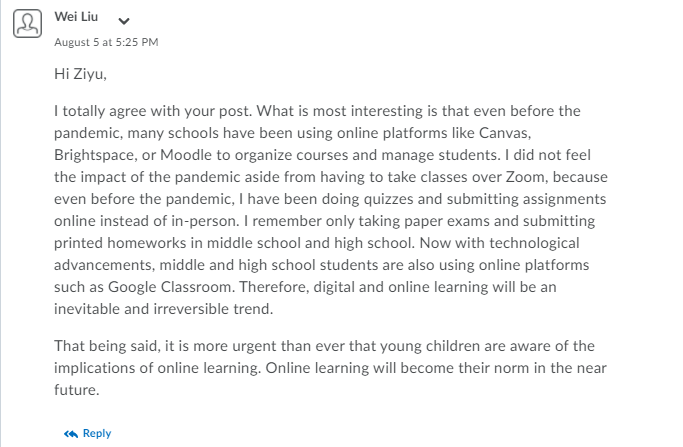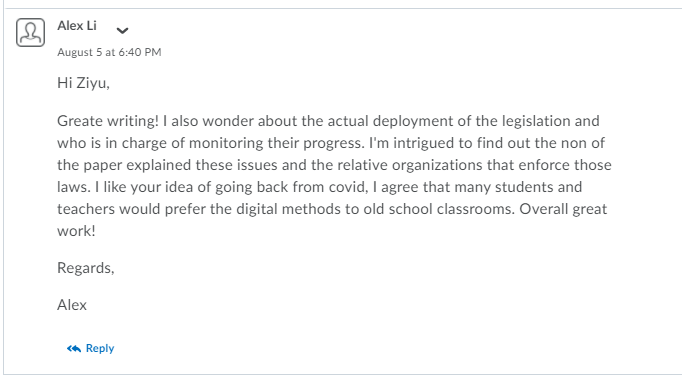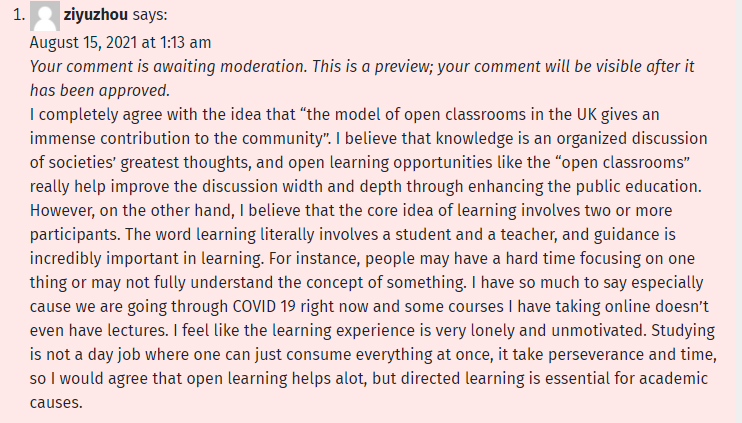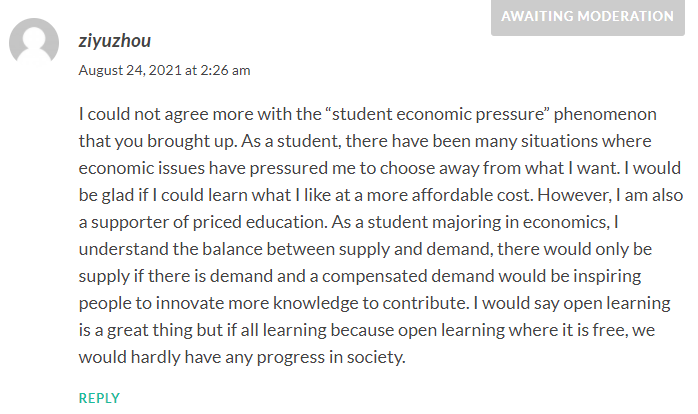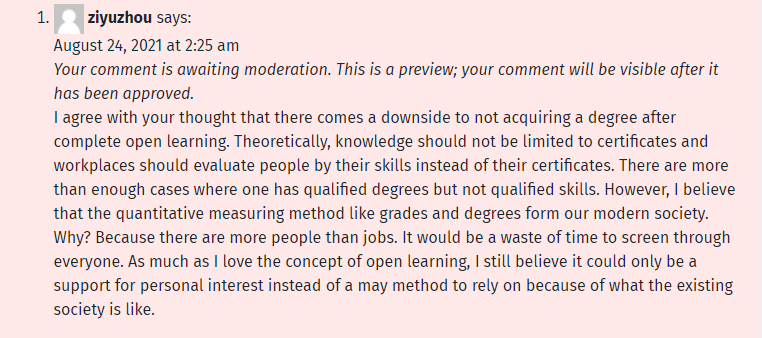After going through this topic’s readings, the question on the future of education keeps rising. I have come to realize that the modes of service delivery have evolved over the last century. Transportation, health care, communication, and so much more have morphed into new technology. However, how we deliver information in our education systems remains rigid and rooted in the pioneering styles and designs. What is the hope for education, particularly for higher education (DeRosa & Jhangiani, 2017)? How do you see the learner and the teacher (DeRosa & Jhangiani, 2017)? These are two of the four questions that DeRosa & Jhangiani (2017), one of the readings I went through, posited in the book ”Open Pedagogy.” I understood that open pedagogy is a modern model of education that suggests that students should be engaging in an actively constructive model of learning, where they are creators of knowledge, instead of a passive one, where they consume it.
The readings I handled in topic 3 have elaborated this topic more presently by analyzing the conception and principles of the theory and the developmental stages. For instance, there is a discussion about David Wiley, the Lumen Learning Chief Academic Officer, one of the first scholars to suggest OERs (Open Educational Resources) and how they should be used (DeRosa & Jhangiani, 2017). Open Educational Resources have been effective in promoting learning control by the students, influencing what they want to learn. This encourages them to constantly seek knowledge as they are motivated by their ability to choose the type of information they prefer to consume (Temesio, 2020). However, this is practical in very few institutions as some universities and colleges virtually control what the students want to search. This is disadvantageous as it reverses the progress made in open learning as students’ access to some information is limited.
One of the strategies used to virtually control students’ searches in most institutions is digital redlining. This is clearly described in my second reading, the article by Gilliard & Culik (2016) that takes a tour down memory lane to explain the technology of digital redlining used in the 90s. I agree with the attributed frustrations that came with digital redlining as described in this article. Redlining could be used positively, for instance, through network filtering that prevents malware and virus attacks and access to child pornography. However, in most cases, redlining limits students’ engagement while accessing online resources by creating boundaries against some information. In such cases, therefore, students are not allowed to satisfy their curiosity. Besides, redlining is a bias option as its concept revolves around removing some information that specific groups are not allowed to view. For an education system where inclusivity should be maintained, censorship creates division by limiting some students to online resources. In a nutshell, redlining does not promote open-access learning to students (Kuthy, 2016).
Lifting censorship as a whole is unrealistic as it is sometimes advantageous by preventing access to harmful and hurtful information by some students. To ensure the beneficial use of redlining, therefore, would involve a lot of considerations. For instance, institutions should first evaluate how their policies about redlining support open-access education to enable them to come up with strategies that will allow students to take control of their learning and not create invisible walls that limit their access (Gilliard & Culik, 2016). Additionally, integrating policy and design would help in coming up with redlining principles that favor accessible education material that is good for the students. Furthermore, tech developers should bear in mind the institutions and populations they are developing redlining software for so that their resources do not create racial discrimination while accessing education.
In another reading, I went through the Aboriginals’ case study, which demonstrates through indigenous youth in remote Australia that engaging and acknowledging learners in projects can have sustainable outcomes as far as the learning agenda goes (“- Learning spaces – ANU,” 2019). For example, creating a space where learning resources are accessible and conducive to literary activities is vital in promoting education in remote areas such as Aboriginals. Community-based organizations like libraries and media centers play a critical role in providing a sense of spatial control for the youth, thus encouraging more independent education. This is promoted by the fact that creating safe spaces where they can carry out education makes them feel less marginalized and discriminated against based on race (Miyahara, 2017).
I have also found out that the answers to the questions posed by DeRosa & Jhangiani (2017) lie in the transference of the risk element to learners to promote and encourage their desire to read. Allowing students to satisfy their curiosity instead of suppressing it works to encourage them to search for more information through the risk element transference. By so doing, it also theoretically and practically promotes continuity, transformation, and innovation within the learning age set. Education can join other sectors in remodeling the delivery of service through open pedagogy.
References
DeRosa, R., & Jhangiani, R. (2017). Open pedagogy. A guide to making open textbooks with students, 6-21.
Gilliard, C., & Culik, H. (2016). Digital redlining, access, and privacy. Common Sense Education, 24.
Kuthy, D. (2016). Redlining and Greenlining: Olivia Robinson investigates root causes of racial inequity. Art Education, 70(1), 50-57. https://doi.org/10.1080/00043125.2017.1247573
New references:
Learning spaces – ANU. (2019, April 11). ANU Press. https://press-files.anu.edu.au/downloads/press/p197731/html/ch04.html?referer=&page=10#toc_marker-11
Miyahara, M. (2017). Creating space for learning. Realizing Autonomy. https://doi.org/10.1057/9780230358485.0012
Temesio, S. (2020). Accessible open educational resources and librarian involvement. International Journal of Open Educational Resources, 3(1). https://doi.org/10.18278/ijoer.3.1.7
